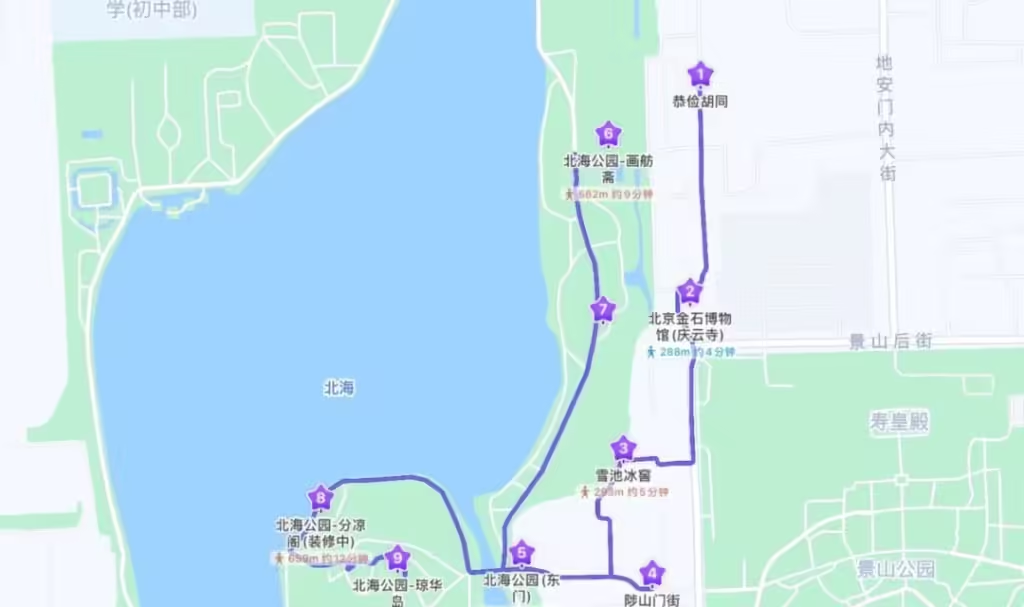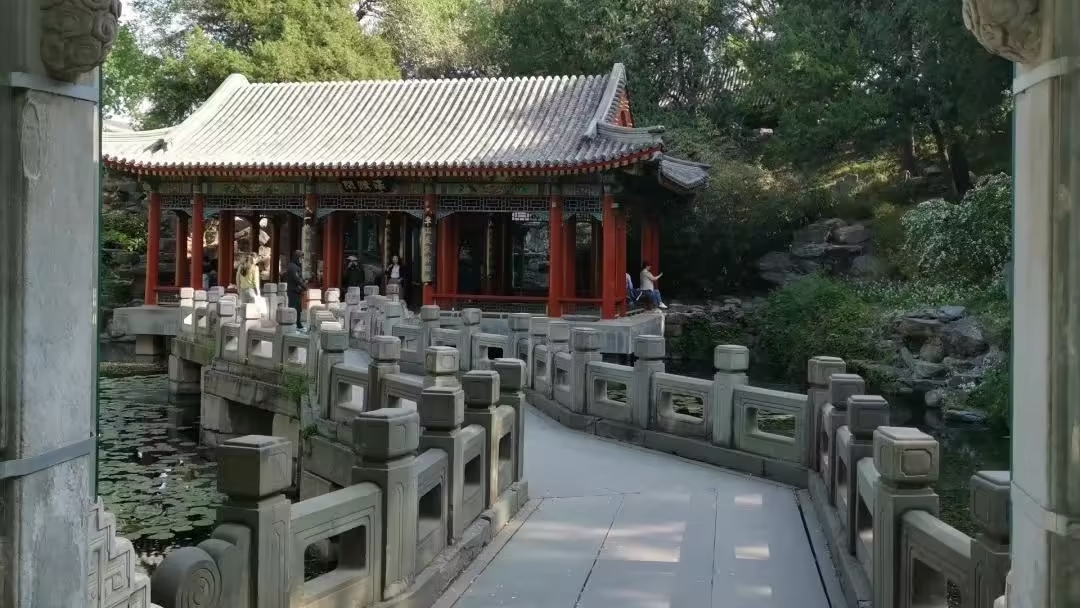Embark on a two-hour journey through the hidden alleys and historical sites surrounding Beihai Park, where centuries-old stories and architectural marvels await discovery. This walking route not only uncovers the lesser-known gems of Beijing’s hutongs but also immerses you in the serene beauty and cultural richness that lie just beyond the bustling city streets. From ancient temples and traditional courtyard homes to secluded gardens and legendary landmarks, this tour offers a unique glimpse into the city’s past, all while enjoying a peaceful stroll through one of its most charming neighborhoods.
Route: Gongjian Hutong ➡️ Qingyun Temple ➡️ Xuechi Hutong ➡️ Zhishanmen Street ➡️ Beihai Park (Huafangzhai, Haopujian, Qionghua Island)

Gongjian Hutong (恭俭胡同): This hutong was historically significant during the Ming Dynasty as it housed the Neiguanjian, responsible for maintaining the Forbidden City’s structures and organizing royal ceremonies. Zheng He, the famed explorer, once worked here. The nearby hutongs, named after various crafts like woodwork and stonework, are remnants of this era. At No. 5, a former icehouse has been converted into a restaurant, while No. 6 was once home to Ye Junjian, the translator of Hans Christian Andersen’s fairy tales. In late spring and early summer, the blooming paulownia and catalpa trees create a romantic atmosphere, attracting many visitors.
Qingyun Temple (庆云寺): Built during the Jiajing period of the Ming Dynasty, this temple is located on the former site of the Neiguanjian. It was converted into a family temple during the Republic of China era and features a typical two-courtyard layout. Today, it houses a Stone and Seal Museum, showcasing works like the “Great Seal of the Founding of the Nation” and traditional engraving techniques from old Beijing artisans.
Xuechi Hutong (雪池胡同): Named after the Xuechi Icehouse, which was one of the six imperial icehouses built along the eastern wall of Beihai Park. The icehouse, now partially integrated into a local morning market, was a semi-underground structure built with city bricks. Lin Huiyin, a famous Chinese architect and writer, lived at No. 13 Zhishanmen with her father and often reminisced about the area in letters to Hu Shi, describing it as a place where her dreams lingered. The hutong also houses the former offices of the Qing Dynasty’s Internal Affairs Ministry.
Beihai Park (北海公园): Near the east gate, two hidden gems are easy to overlook, even for frequent visitors.
- Huafangzhai (画舫斋): Inspired by Ouyang Xiu’s “Record of Huafangzhai,” this serene retreat features elegant pavilions and tranquil waters, reflecting Emperor Qianlong’s aesthetic taste. It was used for royal leisure activities, military drills, archery, and as a place for the emperor to study and enjoy performances.
- Haopujian (濠濮间): This spot represents a leisurely, reclusive lifestyle, mirroring the refined tastes of ancient scholars. The area is designed in the style of a Jiangnan private garden, with winding paths, lush greenery, water pavilions, curved bridges, and striking rock formations, resembling an ancient painting.
Finally, a walk up the long corridor on Qionghua Island (琼华岛) leads you to the Bronze Immortal Holding a Dew Basin (铜仙承露盘). This structure, inspired by a legend of Emperor Han Wudi, was built by Emperor Qianlong. The bronze immortal, standing atop a coiled dragon stone pillar, holds a basin meant to collect dew, which was believed to mix with medicine to grant longevity.

